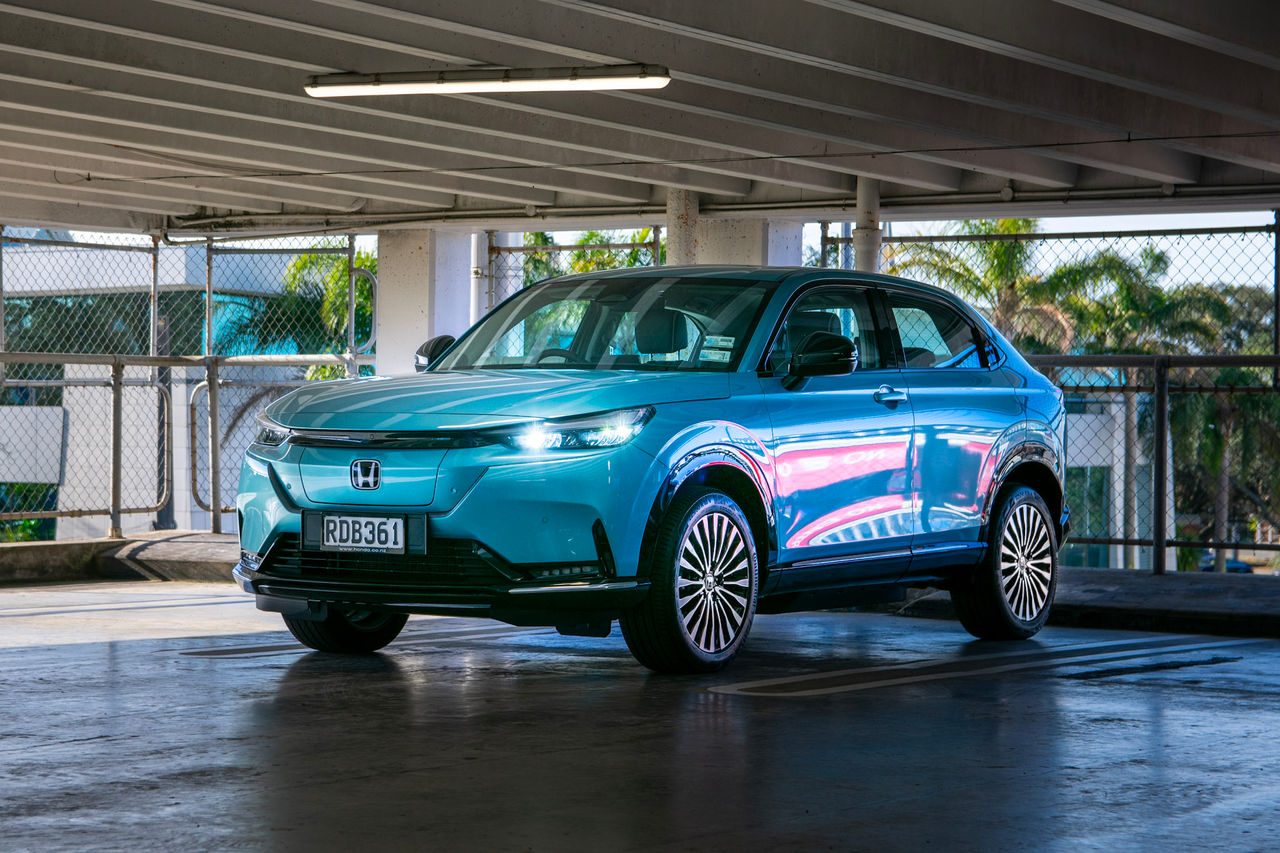
Mercedes-AMG GLC 63 Review
We test drive the Mercedes-AMG GLC 63 S E Performance Coupe on a trip between Napier and Auckland.
09 August 2025
Honda arrives fashionably late to the EV party
Carmakers these days are embracing the use of playful combinations of letters, numbers, and punctuation marks in naming their cars. Honda's latest creation is no exception; the e:N1 is boldly entering the electric vehicle market with an equally eye-catching name.
It's worth noting that this isn't Honda's first electric venture; the company has previously launched BEVs in select markets, such as the Prologue in North America and the Honda e in Japan and Europe. It is, however, their first serious EV debut down under, with the numbered naming system heralding the beginning of a new range of EVs.
Honda utilises the shell of its popular sub-compact HR-V as the foundation for the e:N1, transplanting the traditional internal combustion engine for an electric motor and replacing the fuel tank with batteries.
Retaining the HR-V's classic shape, with its raised profile and sloping roofline towards the back, is a masterclass in design, making the overall aesthetics unique and appealing. The narrowed LED headlights, 'hidden' rear door handles, and new Honda logo, featuring an elegant sans-serif font, give the e:N1 a premium feel.
Honda only offers the e:N1 in a single variant, with two paint options available: white or aqua. While the single-spec option may appear limiting, the car manages to exemplify elegant simplicity and quality.
The single electric motor delivers 160kW of power and 310Nm of torque to the front wheels in the traditional Honda style. The innovative technicians over at Honda have crafted the power output to imitate a combustion engine, making the car feel familiar to drive and reducing the discomfort associated with the somewhat jarring experience you get driving an EV with its instant power delivery.
The result is a car that accelerates like a smooth crescendo, and the absence of any regenerative braking feeling on the other side also ensures a smooth deceleration. At just 1,660 kg, the e:N1 is one of the lightest EVs in the sub-compact segment, offering an agile and dynamic driving experience. The steering is accurate and light, making driving easy in any setting, from carparks to the open road.
You have three drive modes to choose from on a dial in the centre console, but there isn't a significant difference in driving experience between Normal, Sport, and Eco modes. Sport mode definitely left us wanting more from it as it didn't noticeably increase throttle responsiveness or stiffen the steering any more than in Normal mode.
We also observed that the electric motor was quite loud and could be heard while driving at high speeds on the open road. Fortunately, there could be worse issues to complain about than that and turning on the radio drowned out the noise.
Honda claims an impressive range of 500km for the e:N1, which realistically equates to approximately 412km (WLTP) under typical driving conditions. We observed a maximum range of around 350km at full charge, which plummeted when we turned on the air conditioning.
As for charging times, you can expect 40 minutes to charge the 68kWh battery from 30% to 80% using DC fast charging. While not class-leading, it strikes a good balance for daily commuting and offers a decent range. Honda has recently partnered with Z Energy to offer home chargers at a discounted price with every new e:N1 purchased.
The interior is refreshing and comfortable, with a "get in and go" design. The e:N1 features a push-start button and an emergency brake button conveniently placed for a familiar yet modern feel. While the gear selector is a set of buttons in the centre console, the design is sleek and contemporary without feeling foreign.
The one spec variant contains fewer thrills than you might expect for the price tag. You still get wireless phone charging, sports leather seats, and a sleek blue LED trim light on the dashboard and doors as standard. However, it lacks heated seats, a heads-up display, and an easy-opening tailgate. Despite this, the interior feels premium, and the materials reflect quality and expert craftsmanship.
Attached to the dashboard is a gigantic 15.1" touchscreen infotainment display that is divided into three segments controlling the air-conditioning, vehicle systems, and infotainment. The screen is vibrant and sharp, with a responsive touch that simulates the fluidity of a smartphone.
The car can feel cramped due to the EV batteries located under the floor, especially in the back, where taller adults may find headroom limited. However, it offers good visibility, and the large rearview mirrors provide a decent view of the surroundings, compensating for the lack of a 360-degree camera.
You can find the charging port behind a panel on the front of the car that contains both 11kW AC and 75kW DC charging ports. Although clever in design (meaning you can charge from either side), opening it up to charge might leave your hands less than spotless.

Priced at $52,000 +ORC, the e:N1 offers a competitive price point, standing shoulder to shoulder with competitors from Kia and Toyota. Included in the price tag is Honda's five-year, unlimited-kilometre warranty, while the battery is covered by an eight-year or 160,000-kilometre warranty.
Overall, the e:N1 is an impressive debut for Honda into New Zealand's EV market. Where it truly distinguishes itself is Honda's approach which revolves around crafting an exceptional vehicle first, with electric capabilities seamlessly woven into the overall concept. This thoughtful blend of style and functionality ensures that the e:N1 not only looks good but also delivers a compelling driving experience.